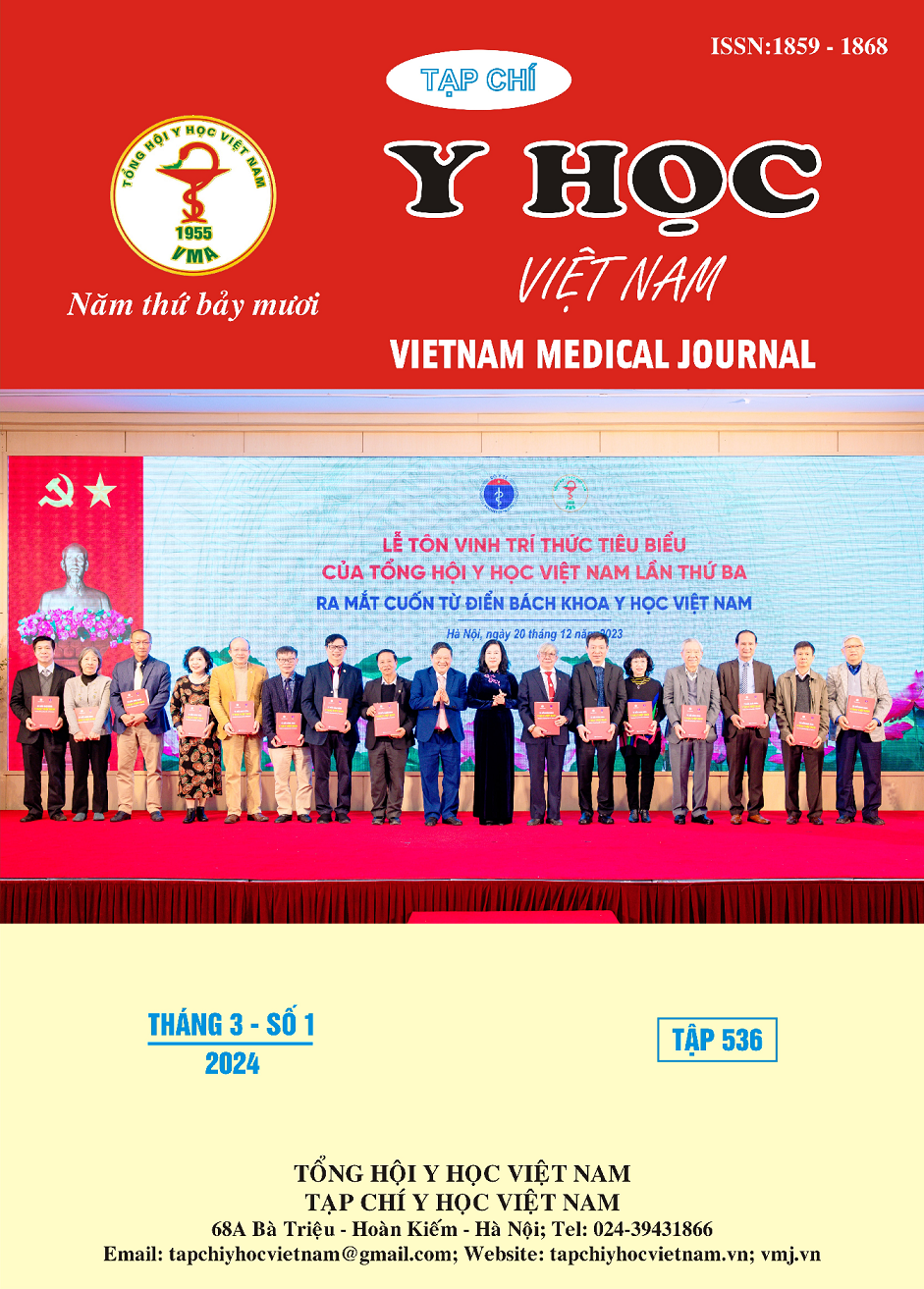THE DIAGNOSTIC CHARACTERISTICS AND OUTCOMES OF ORCHIOPEXY SURGERY ON CHILDREN UNDER 24 MONTHS OF AGE AT THE VIET DUC UNIVERSITY HOSPITAL
Main Article Content
Abstract
Abstract: Cryptochidism is quite common in children. Treatment is mainly surgery. Nowadays, surgery, anesthesia, and resuscitation are more developmented. The age for surgery is reduced but the appropriate age for surgery is still controcersial. Objective: Describe the diagnostic characteristics and outcomes of orchiopexy surgery in children under 24 months of age at the Viet Duc University Hospital. Method: Intersectional Descriptive Recovery Study from September 2021 to September 2022. Results: The rate of two-sided cryptorchidism was 33.6%, and the figure for less than 12 months of age was 51.6%. Undescended testicles were recorded on ultrasound with the most occurring rate in the tubes at 67,5%. Laparoscopic surgery was performed on 4 patients (4.2%); the rest were treated with orchiopexy surgery. The average time of surgery with one side is 20.2 minutes, two- sides is about 39.5 minutes, and laparoscopic surgery tends to be 25.2 minutes. The average time of postoperative is 1.1 days. The rate of complication is 3.1%. The average undescended testicle volume is smaller than the normal side‘s volume. Postoperative, the figure for cryptorchidism in the scrotum is 98.4%. There are 2 testicles in tubes. After 3 months, the rate of testicles does not have a statistically significant difference with the volume of testicles operated. Conclusion: Surgery in children under 24 months of age is safe and effective.
Article Details
References
2. Wood HM, Elder JS. Cryptorchidism and testicular cancer: separating fact from fiction. J Urol. 2009;181(2):452-461.
3. You J, Li G, Chen H, Wang J, Li S. Laparoscopic orchiopexy of palpable undescended testes_ experience of a single tertiary institution with over 773 cases. BMC Pediatr. 2020; 20(1):124.
4. BRAGA, Luis H.; LORENZO, Armando J.; ROMAO, Rodrigo LP. Canadian Urological Association-Pediatric Urologists of Canada (CUA-PUC) guideline for the diagnosis, management, and followup of cryptorchidism. Canadian Urological Association Journal, 2017, 11.7: E251.
5. Thái Minh Sâm. Kỹ thuật kéo dài thừng tinh trong điều trị tinh hoàn ẩn thể cao. luận án Tiến sỹ y học, Trường Đại học Y dược Thành phố Hồ Chí Minh, 2007.
6. O'Kelly JA, Breen KJ, Amoateng R, Scanlon L, Redmond EJ, Kiely EA. Assessment of referral patterns for boys with suspected undescended testes and identification of risk factors to aid diagnosis. Surgeon. 2022;20(4):e100-e104.
8. Ritzén EM. Undescended testes: a consensus on management. Eur J Endocrinol. 2008;159 Suppl 1:S87-S90.


